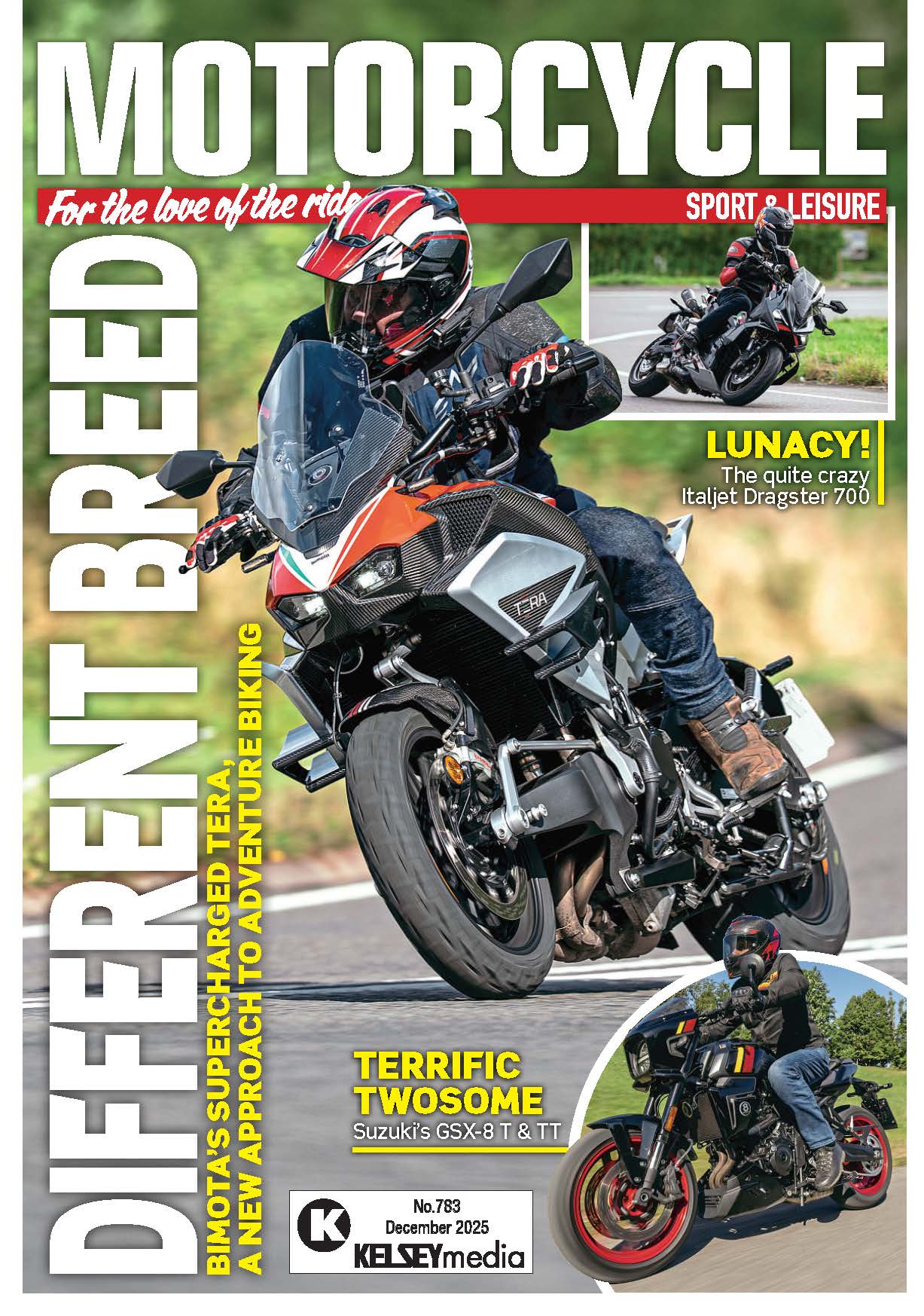In the past few years in the UK we have seen a seismic change in the type of modern motorcycles being bought. The love affair with sports machines has waned and now the favoured type of bike is an adventure style machine which, given the age demographic of those fortunate enough to be able to purchase new bikes, is not surprising.

Words & photography: Ian Kerr
Despite the brain telling riders that they/we are still 18, the aches and pains caused by race positions tell a different story, not to mention a desire to keep one’s licence due to the proliferation of cameras.
Many manufacturers now provide training facilities to teach riders how to get the best from their adventure-based mounts and this, coupled with the ease at which the continent can be accessed with numerous authors promoting the ease of two-wheeled travel around the world, it is not really a surprising revelation.
Enjoy everything MSL by reading the monthly magazine, Subscribe here.
The Channel Tunnel and various ferries are now packed with those keen to make use of large capacious metal luggage and spend their leisure time exploring Europe (and the world!) helped by sat-navs keeping them safe along with mobile phones keeping them in touch with loved ones.
But, as we all know, it was not quite so easy 40-50 years ago with hardly any manufacturer coming out with purpose-made luggage… until BMW started the trend.
Riders of British machines had the option of Craven panniers thanks to the globe- trotting Ken Craven (once a regular contributor to MSL) who designed the glassfibre panniers and top boxes that you can still see at many classic bike events adorning the rear ends of those who still believe in touring on what has now become a classic motorcycle.
The classic movement has been flourishing for many years and there are plenty of events aimed at bikes of all ages from veteran, vintage, post-vintage and lastly classic, not only in the UK, but in Europe. The Japanese classic movement is also steadily growing as the age demographic moves ever onwards.
However, there are also a large number who want to explore and enjoy the roads and hospitality of our European cousins for longer than the odd day or weekend, using their classic mount. But, they want a bit more comfort – yes it’s probably an age thing. They want a hotel and a few more changes of clothes and kit than can be carried or attached to an ageing mount. Plus a decent toolbox and few spares is also a welcome insurance to encourage travel further from home when the machine used can be often over 75 years old.






One particular classic event that has grown considerably since the turn of this century answering those needs and wants is the Colombres Rally, which runs late September and into early October each year.
Centred in northern Spain and utilising the superb motorcycling roads in the Picos de Europa and Asturia, it benefits from being just a hop, skip and jump from the Brittany Ferries’ routes to Santander and Bilbao.
Originally started by a club based in Santander, it migrated out to the small coastal village of Colombres 50 miles south, before they moved it back into town to accommodate the growing entry. However, being based in a large city was not what a lot of the entry (which was always primarily British) wanted and a lot of people stopped going.
But, back in Colombres, the locals realised that they had lost a large amount of income at the end of the holiday season. So they formed their own club named after the migrants who headed for the USA many years ago and whose museum stands in the village. So the Motor Club Indianos was born in 2011 with a will to keep the event alive and they have done that in a big way. The event is now known as the Rally International Motos Clasicas and is for pre-1988 motorcycles.
Under the leadership of club president Amable Dobarganes (who has an impressive collection of his own classic bikes) and his wife Anna, son Raul and his wife Sophia, along with their small team including ‘Slow Rider’ who regularly posts numerous images on Facebook – the event has improved and grown each year.
It has been covered by numerous media publications in Europe and local TV, while one magazine described it a few years ago as the ‘Spanish Daytona bike week’. It is also now firmly backed and endorsed by the Asturian Motorcycle Federation and the local council, along with local hotels.
In addition to the ‘main’ event, they have widened the scope to now include the week long North of Spain Rally the week before, but based further south in Cangas Narcia; run on similar lines, that of daily marked routes with a lunch stop that provides fresh cooked food and refreshments along with a back-up truck (the ‘van of shame’) to deal with any problems.
As anybody who has visited the area will tell you, both areas provide the same superb motorcycle roads, many running through the valleys and gorges or hewn into the hillsides. They include roads that climb to over 1500 metres, all providing challenging riding, as well as superb views and excellent photography opportunities.



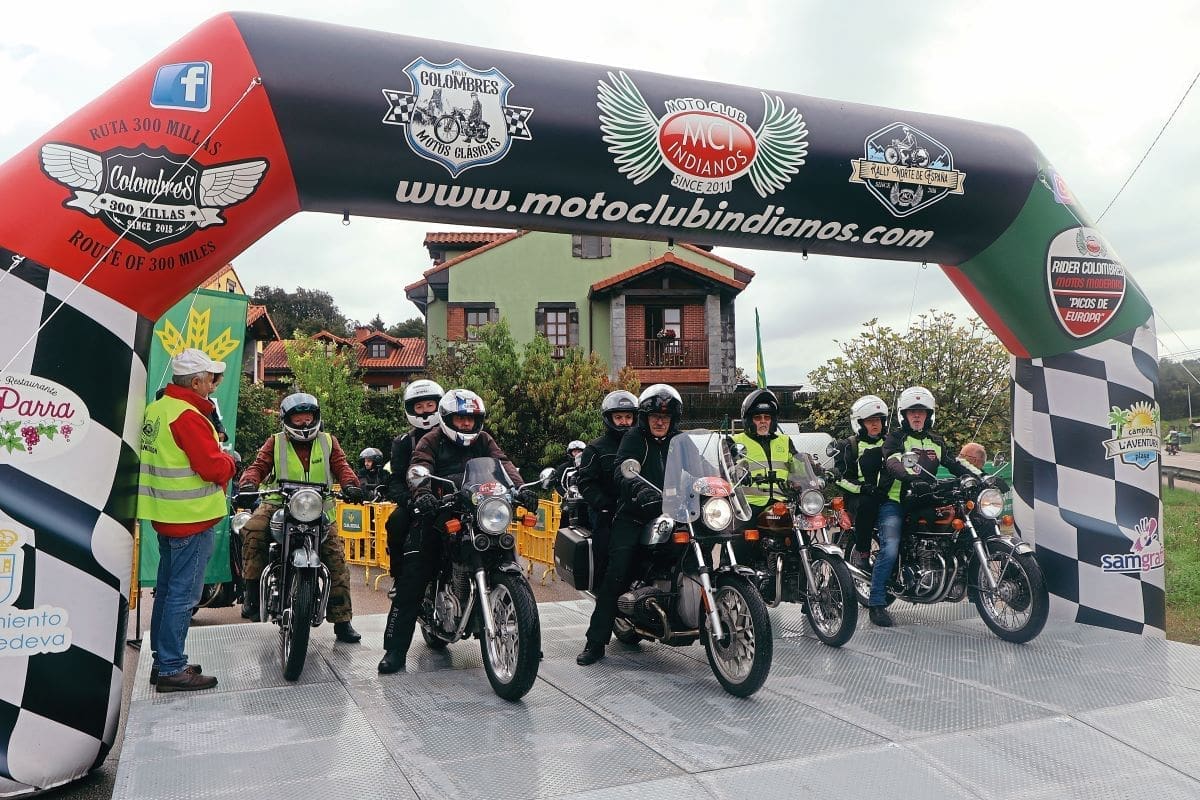


In addition there is plenty of time to stop and see/absorb some of the culture, the area not being spoilt by the tacky tourism normally found further south in the normal holiday tourist areas of Spain. But it is an event to enjoy in which ever way you see fit.
Should you actually want a riding challenge, the club introduced the 300 mile challenge a few years ago.
In many ways it does not sound a lot, but when you have just 10 hours to average the 30mph needed on the aforementioned twisty, sinuous, mountain roads, believe me it is a real challenge, especially on a bike fast approaching its 70th birthday.
The one-day event, run at the end of the Colombres Rally week, is certainly not a race, in fact it is based on a 30mph average with secret checks to prevent you speeding or course cutting and is now an established part of the event with the seventh edition being run in 2024. It starts as the sun rises and the aim is to finish in 10 hours to collect an award with the rider navigating from a route sheet and planning their own stops.
Thanks to extensive publicity over the past few years, most people are aware of the format of the normal Colombres week which sees the final weekend packed with attractions such as the traditional hill climb which is part of the Spanish championship, an autojumble and a classic motocross event to round things up on the Sunday.
However, last year (2024) these events dropped off the agenda and were run the weekend after to keep the locals happy. Stall numbers were dropping for the autojumble, so that no longer takes place.





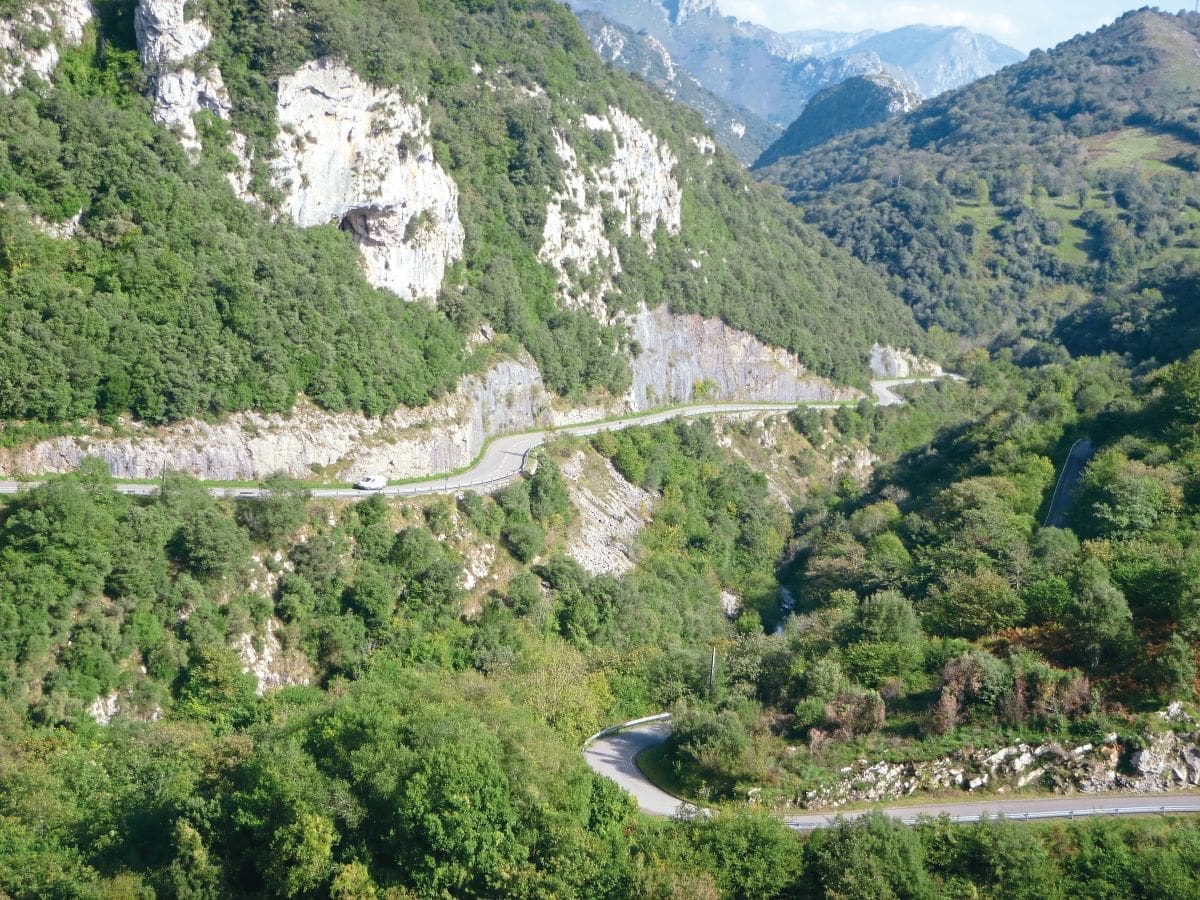
But, just in case you have missed any of the coverage, a quick explanation of the event and procedure might be in order for those with suitable mounts. Don’t worry if you have a modern machine, the club runs a similar event in May/June for modern bikes along the same lines as the classics.
February normally sees the publication of the entry forms and you have a choice of either doing both events or just one depending on your time available and budget. The entry fee in both cases includes all road books and a T-shirt and souvenir.
The Colombres event lists a choice of hotels suiting various budgets, but the North of Spain is based at just one.
The reason is that it becomes the centre of the first week and the Parador de Corias is located in the Asturian town of Cangas del Narcia approximately 150 miles south of Colombres. (The state run hotel was in fact a monastery beforehand and has now been declared a National Historic Artistic Monument.) Despite its five star rating they are more than happy to accept motorcycles, as well as wet riders, as can be the case.
Having had your booking accepted you will be given a code which will enable you to obtain a discount when making your booking with Brittany Ferries, unless of course you are willing to ride 1000 miles each way though France and Spain, and yes some do.
On arrival in Spain you book in at the La Para, which is now the hub of the event which provides a free drink at the end of each day’s ride, and obtain your routes, t-shirt and ‘dorsals’ for the bike. If you are doing the first event, a night in a hotel is required before having your luggage transported south to the monastery. Accommodation here is on a half board basis with the club providing lunch at the various stops on the daily routes, so basically full board, which is why it may seem a little expensive.
You then ride down using the same method for the rest of the event – that of using the route book, or as some do, just relying on the arrows marking each turn and change of road. (Sat-nav info is provided, but many find a loss of signal makes this unreliable at times.) The back-up van follows at a discreet distance so if you are unsure you can always wait.
Each day different routes then take you out to explore the topography and some of the local culture which is very different to that further north and used in the Colombres event. Each day (the 300 mile excepted), is around 100-150 miles on the longest days.
At the end of the week you ride back to the La Para (your luggage being brought back for you) and depending on your arrangements you either book into your next hotel for the main event or head for home.
The main event either starts from the main square in Colombres or from the La Para utilising some of the best biking roads in the area.
Again lunch is provided, but in the evening you are free to explore the various excellent restaurants in the area or stay in at your hotel after socialising at the La Para at the end of the days ride. Each day starts at 10am, so it is a relaxed start and you have no pressure on the road and can stop for coffee or photos as much or as often as you like.
It must be said that the routes selected, along with the location of the lunch stops, allow you to experience the best of northern Spain and makes this an amazing event that provides motorcycling at its best.


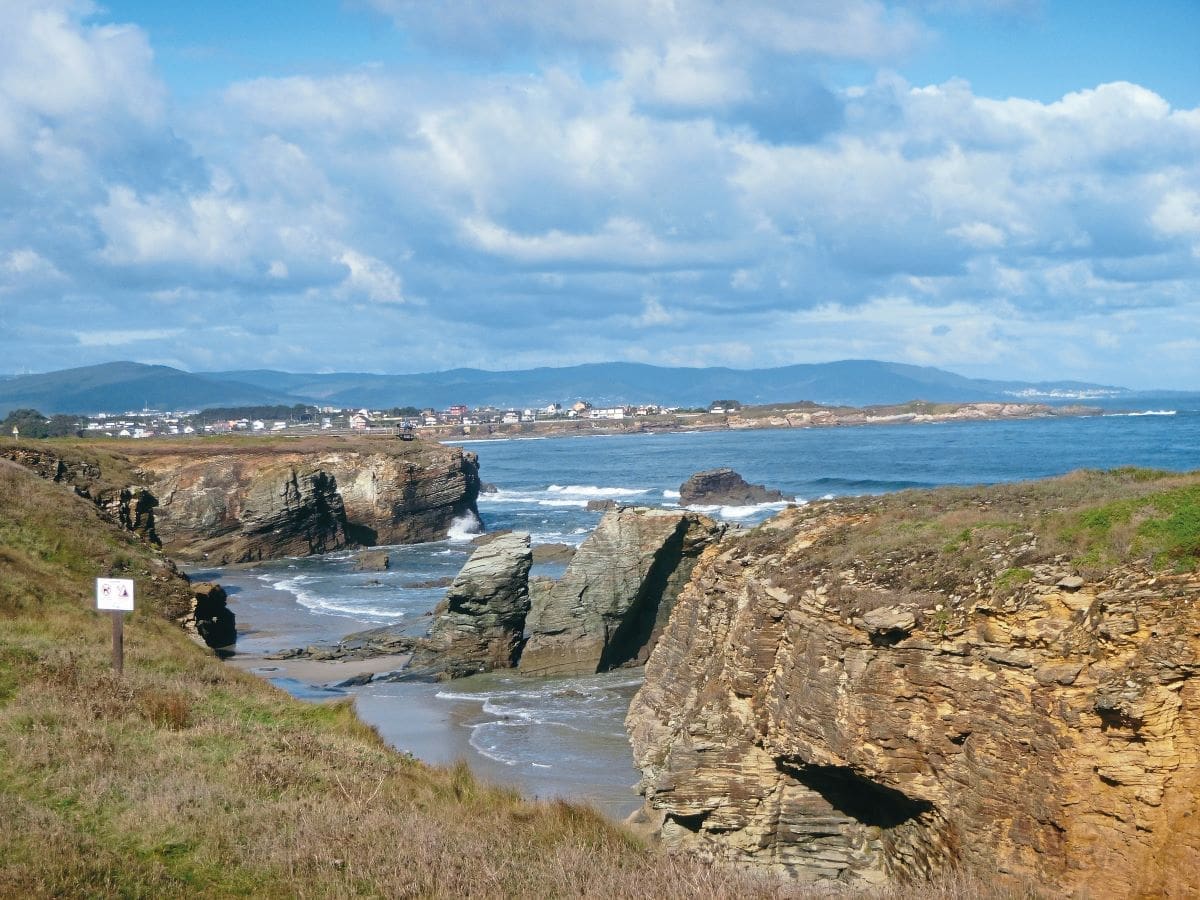
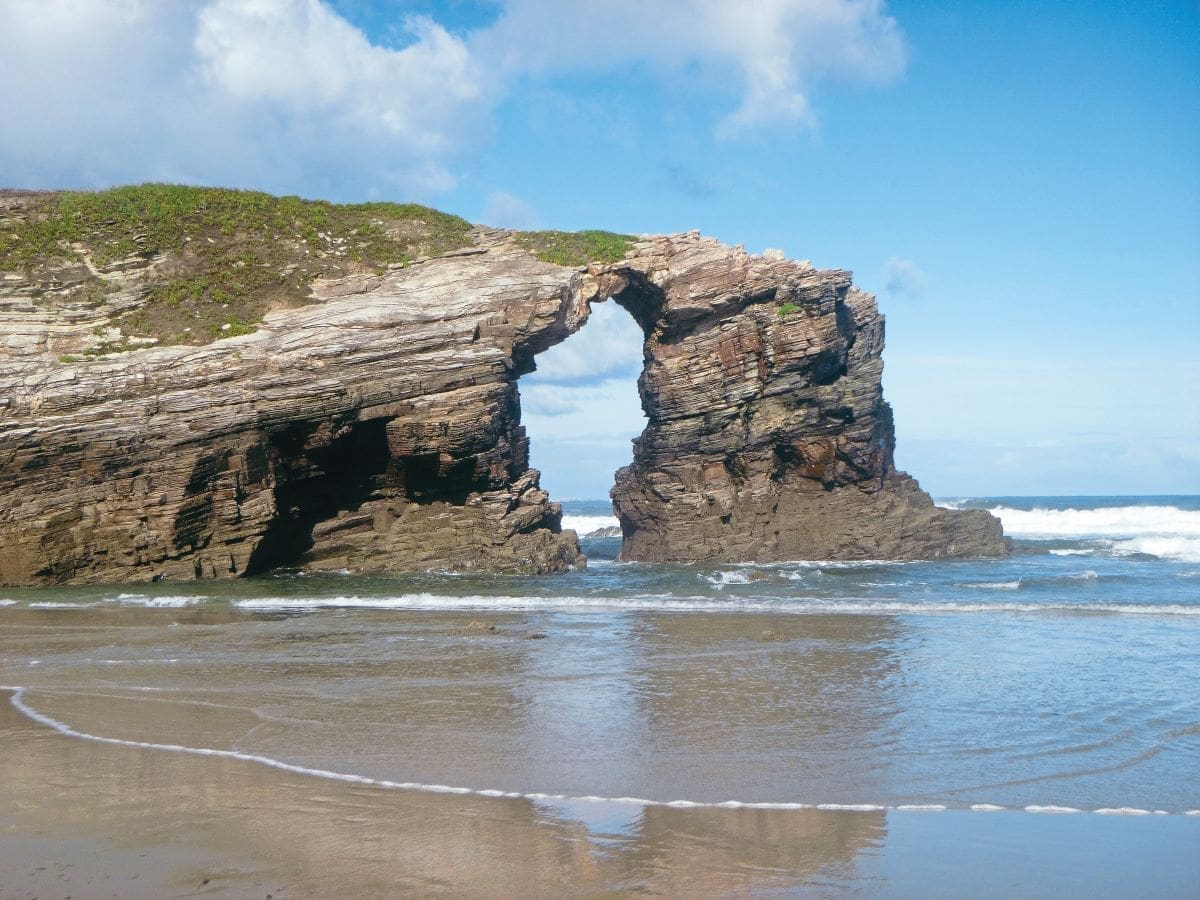


The massive entry for the main event is mainly made up with riders from the UK, but there are an increasing number of entrants from France, Belgium, Germany and the Netherlands, as well as quite few from Australia who buy bikes in the UK to do the event on.
If you do not have anyone to go with, like many other events on the continent it is an event where you can turn up on your own knowing nobody and end up with a whole circle of new friends by the time you head for home. You literally cannot help but make friends and in times of breakdown, everyone helps in some way to enable people to keep riding by loaning parts or in some cases, getting them shipped in.
Old favourites on the daily routes include the village of Trevsio in the heart of Picos de Europa National Park, the port of Lastres, towns such as Cangas de Onis, Puentenansa, Arenas de Cabrales, Panes, Colunga and so on; all provide enough interest to spend an hour or so, no matter how often you have been.
Mercifully the roads are camera-free and not heavily policed by the local police, but there are now plenty of signs warning of speed enforcement by means of helicopters and drones and it does not pay to take chances, especially if you are not a regular on ‘the wrong side of the road’.
Normally the weather is just right, being warm enough to be pleasant without being too hot, but you have to bear in mind it is a coastal resort with mountains and you do get the odd day of rain. It is then you appreciate the hotel and the extra set of riding kit.
Likewise, should anything go wrong the organising team has a doctor on hand and a full workshop for those minor problems.
While the club does not advertise or attend shows in the UK directly, it does have an excellent Facebook presence masterminded by ‘Slow Rider’, who posts photos taken during the event daily throughout the year to keep the enthusiasm running until the following year.
Despite the growing and welcome influx of new riders each year, it is an event populated by many who, like myself, having tried the earlier versions and other similar events based in Spanish cities and find this far better in every respect. It may not be cheap, but quality products never are and it is very much an event which is value for money.
So if you fancy doing some classic motorcycle touring with a little bit of luxury thrown in, take a look at the website or more importantly make a booking and I will see you out there.
Get more information from www.motoclubindianos.com


